|
|||||||||||||||||||||||
| |
|||||||||||||||||||||||
Modification to RN Standards at Liverpool
and Working-up
|
|
|
HMS Battler in Grand Harbour Malta, September 1943 with a deck full of Seafire L.IIcs belonging to 807 and 808 squadrons during Operation AVALANCHE Photo: Author's collection |
Departure for the Mediterranean &
operation AVALANCHE the Allied invasion of Italy
HMS BATTLER’s next operational tour was to be in the Mediterranean; on July 30th she re-embarked 808 squadron’s 9 Seafires, and after storing ship and loading stores and passengers BATTLER, in company with her sister ATTACKER, HUNTER, and STALKER sailed from the Clyde at 14:00 hours on August 2nd bound for Gibraltar. The four carriers and their escorts ran into a terrible storm in the Bay of Biscay which lasted thought the 3rd and into the 4th; the seas were so rough the ships had to heave to ride it out. All four carriers suffered storm damage and many aircraft were badly damaged, HUNTER suffered the worst of the damage and was forced leave the convoy to return to the UK. The remaining three carriers arrived at Gibraltar, at 18:00 hours on the 9th. On August 14th she embarked a further 9 Seafires when 807 squadron from RN Air Section North Front came aboard; one of these Seafires had to make a forced landing in the sea killing the Free French Navy pilot Lt. P. Bergerot FFN.
On September 1st 1943 BATTLER became a part Force 'V', the covering force for the allied invasion of Salerno Italy in operation AVALANCHE planned for operations between September 9 - 12th. Force 'V' comprised HM Escort Aircraft Carriers ATTACKER, BATTLER, HUNTER, STALKER and the maintenance carrier UNICORN (making a rare operational contribution), Cruisers EURYALUS [flagship], SCYLLA and CHARYBDIS, Destroyers CLEVELAND, HOLCOMBE, ATHERSTONE, LIDDESDALE, FARNDALE, CALPE, and Polish destroyers ORP SLAZAK and ORP KRAKOWIAK.
A second force, Force H comprised the Battleships NELSON, RODNEY, WARSPITE and VALIANT, Fleet Carriers ILLUSTRIOUS and FORMIDABLE and a screen of 21 destroyers including French, Polish and Greek warships was a covering force for the landings, intended to prevent any interference by Italian surface warships. On the eve of operation AVALANCHE Italy surrendered so the threat had passed, however there was a strong German force in the area.
By September 5th BATTLER was at Malta with the other ships of the Force. Force 'V' sailed from Malta on 8th September 1943, arriving on station 45 miles south-west of the beachhead on the early morning of the 9th. The carriers of Force 'V' operated only Seafire squadrons; ATTACKER (879 & 880, 19 aircraft), BATTLER (807 & 808, 18 aircraft), HUNTER, (834 Fighter flight & 899, 20 aircraft), and STALKERR (833 Fighter flight & 880, 20 aircraft) UNICORN (809, 887, and 897, 30 aircraft) making a total of 109 Seafires in 11 squadrons. The five carriers were to provide fighter cover for the landings. It was intended that a constant presence of naval air cover would be maintained over the landing sites, up to 20 aircraft aloft at a time; the CVEs would carry out the patrols over the beachhead and UNICORN’s aircraft would provide top cover over the force. The first flights were launched at dawn on the 9th. At this time none of the four CVEs were equipped as fighter or assault carriers so fighter direction was provided by the Fighter Direction Ship HMS ULSTER QUEEN.
The attrition rate was high, and the CVEs required additional aircraft to be transferred from the Fleet Carriers of Force H in order to continue operations at this level (Force H withdrew to Malta on the 11th, being nearly out of aircraft itself by this time). Once the airfield at Paestum was under Allied control as many serviceable fighters as could be mustered were put ashore to operate from there. BATTLER could only manage 5 serviceable Seafires to disembark out of 18 embarked on the morning of September 12th; ATTACKER managed 4, HUNTER 5, and STALKER only 2, UNICORN supplied 10. After disembarking these fighters, the force withdrew to Palermo, Sicily to replenish. During the four days on station the carriers, which all flew Seafires, launched a combined total of 713 sorties, providing more than half the allied air coverage over the beach head. No RN aircraft were lost to enemy action but 4 were lost through engine failure and 32 were written off in deck landing accidents. The carriers were back on station by the 16th and the detached aircraft were recovered. On the 17th a reorganisation of resources was undertaken which resulted in what remained of 807 and 808 squadrons transferred from BATTLER to HUNTER, 834 now transferred to BATTLER.
Force V disbanded on the 20th of September, ATTACKER, HUNTER, and STALKER returned to the UK to refit and allow squadrons the opportunity to receive replacement aircraft and aircrews. BATTLER however proceeded to Gibraltar. She had been assigned to the Eastern Fleet for duties as a trade protection carrier; she was initially to operate out of Bombay covering Aden to Bombay convoys.
Operations with the Eastern Fleet
BATTLER with 834 embarked (9 Swordfish & 6 Seafire L.IIc) joined the Fast Convoy K.M.F. 24 off Gibraltar on September 22nd for passage to Port Said, sailing in company with HM Ships CARLISLE, ALDENHAM, ROCKWOOD, BELVOIR, HHM (Greek) Ships KANARIS, MIALOULIS, and THEMISTOCKLES, She arrived at Part Said on September 28th, and after passage through the Suez Canal, arrived at Suez. She sailed for Aden on October 1st escorted by the Sloops LANDGUARD and SENNEN arriving Aden on October 4th where commenced a 12-day boiler clean. 834 squadron was disembarked to RAF Riyan, to conduct anti-submarine sweeps from October 3rd - 17th.
BATTLER sailed on October 17th in company with the destroyers ROTHERHAM, QUIBERON, and QUALITY to join her first convoy, AB.17, re-embarking her squadron to continue A/S sweeps, arriving at Bombay on October 26th. On November 4th BATTLER, QUIBERON and QUALITY left Bombay to rendezvous with Landing Ship Tank convoy AB. 18 A and escort it back to Bombay; screened by the destroyers ROTHERHAM, NORMAN, and NEPAL she provided A/S air cover for the convoy between November 7th and 9th.
BATTLER, NAPIER, ROTHERHAM and NEPAL left Bombay November 11th to rendezvous with the fast troopship section of convoy AB. 20 provided ocean and A/S air escort to Bombay between November 14th and 17th. A detachment of 4 of 834 squadron’s Seafires was put ashore to operate out of RAF Santa Cruz, India between November 17th and December 26th.
The next convoy to cover was inbound from Aden to Bombay and BATTLER, destroyers ROTHERHAM, NEPAL and the frigate PLYM sailed on December 12th to take over the escort of convoy AB. 24 at a pore arranged mid-ocean meeting point on the 15th. The convoy and escort force split off into three sections destined for Bombay, Trincomalee and Durban; BATTLER, in company with destroyers BOXER, ROTHERHAM, ROEBUCK, RAPID and frigates KALE and DERG and arrived at Bombay on December 19th. BATTLER sailed from Bombay to cover one final convoy on December 26th 1943, in company with destroyers ROTHERHAM, ROEBUCK, RAPID, frigates KALE and DERG she rendezvoused with convoy AB.27A on January 11th 1944 and escorted it to Bombay.
Operation THWART & Operation COVERED
On handing off convoy AB.27A BATTLER was detached to operate with ships of Force 62, HM Cruisers KENYA, NEWCASTLE and SUFFOLK, Armed Merchant Cruiser CANTON, Destroyer NEPAL (RAN) and HM Frigate BANN for Operation THWART. This was a search for a blockade runner, the U-Boat Supply Ship CHARLOTTE SCHLIEMANN in an area 900 miles SE of Mauritius. The main force sailed from Colombo on the 12th, BATTLER joining at Mauritius on January 16th. The force sailed from Mauritius on the 19th to begin the search but all returned to Mauritius on the 21st. A smaller force, Force 64 (KENYA, BATTLER and NEPAL) put to sea on the 23rd and searched further to the SE but the operation was cancelled due to adverse weather after a fruitless search on the 30th. All ships returned to Mauritius.
BATTLER and the cruiser SUFFOLK proceeded to Durban, South Africa from Mauritius arriving there on February 4th. The aircraft of 834 squadron disembarked for a short spell ashore to
RN Air Section Stamford Hill, Durban, South Africa, re-embarking on the 13th. The ship appears to have had a remarkable flying safety record; the next recorded incident was on February 23rd 1944 when Lt D. A. E. Holbrook
RNVR made a heavy landing in Seafire LR702 ('Z') causing the port undercarriage to collapse.
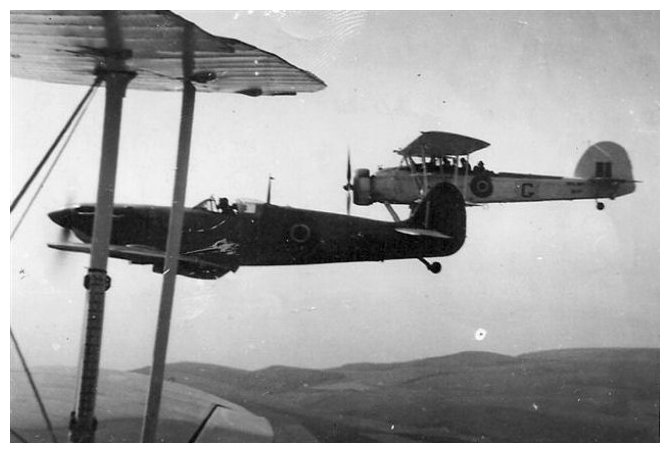 |
A Seafire L.II and Swordfish II form 834 squadron n in formation. Photo: courtesy Gary Evans. |
BATTLER was back at Mauritius at the beginning of March where a force was assembled to search for another blockade runner, the U-Boat Supply Ship KMS BRAKE codename Operation COVERED. Again, there were two smaller forces, Force 67 the Cruiser NEWCASTLE with the Destroyer ROEBUCK, and Force 68 the Cruiser SUFFOLK with the Destroyer QUADRANT. After seven days of searching Swordfish HS257 ('K') of 834, crewed by Lt F. A. J. Pennington RNZNVR, Lt G. M. Evans RNVR & Petty Officer Airman R H. Holmes located the BRAKE with 2 U-boats alongside on March 12th. BATTLER launched further Swordfish armed with rocket projectiles to shadow the BRAKE and her charges, while ROEBUCK came in for an attack. The engagement saw the BRAKE scuttled and one U-boat was damaged by rockets fired from circling Swordfish. The group withdrew to Mauritius, arriving there on the 16th, BATTLER sailed again for Durban, South Africa for refit, arriving there on March 21st; 834 again disembarked to RN Air Section Stamford Hill.
|
|
Battler on ferry duties: the Seafires of 834 squadron are parked forward of the forward lift with the squadron's Swordfish parked aft of the lift, the remainder of the flight deck is covered with Hellcats as deck cargo. Photo: Author's collection. |
Return to Trade Protection Duty
On completion of her refit HMS BATTLER re-embarked the Swordfish element of 834 squadron on June 24th, the Seafires remaining at Stamford Hill, and sailed with the north bound convoy CM.55 from Durban to Kilindini on the 28th. She sailed From Kilindini on July 11th as escort for convoy KR11 to Colombo, arriving there on the 22nd. ! Note: some commentators state she sailed with convoy CM53 but this departed from Durban on May 13th, 5 weeks before BATTLER re-embarked any aircraft.
On July 25th 834 squadron flew ashore to RNAS Katukurunda where a new fighter flight of 6 Wildcat Vs awaited their arrival. This flight had formed at RNAS Puttalam on April 14th and replaced the Seafires discarded at Durban. In Early August the ship gave DLT (Deck Landing Training) to the pilots of 834 Wildcat flight; Lt B. N. A. D. Burne RNVR was killed on the 7th when his aircraft, JV484, suffered an undercarriage collapse during an accelerated take-off, the port wing struck a Bofors gun mount and the aircraft fell into the sea and sank, he was not recovered.
The squadron re-embarked on August 11th and carried out anti-submarine patrols in the Colombo area before moving to Addu Atoll, tin he Maldive Islands on the 22nd, to continue A/S patrols. This patrol period saw 4 Swordfish lost and 3 seriously damaged; on the 25th Sub-Lt. J. McVittie RNVR in LSI85 ('M') made a heavy landing causing the undercarriage to collapse; on the 29th Lt. J. A. Robson RNZNVR in HS617 ('F') made a heavy landing which damaged the port stub plane; September 1st Sub-Lt. G .E. H. Owen RNVR in LSI87 ('L') struck the rounddown, rose 20 feet before crashing on dock; on the 2nd Sub-Lt. P. D. O. Liddell RNVR in LS440 ('C') made a heavy landing causing the starboard tyre to burst causing damage to the oleo leg; on the 6th Sub-Lt. Liddell put the same aircraft into the barrier writing it off; also on the 6th Sub-Lt. McVittie in LS451 ('T') after being waved off was attempting to go round again but hit Swordfish 'A' and dived into the sea, the pilot was recovered OK; on the same day Sub-Lt. McVittie is recorded as hitting another aircraft while flying in LSI85 ('M') and ditching, again rescued OK; finally, on the 8th Sub-Lt. G.E. H. Owen in LS346 ('G') overturned and aircraft sank in the sea, he was recovered OK.
The Wildcats fared far better with only two incidents; on the 22nd Lt I. T. Dixon RNVR flying in JV514 had his arrester hook pulled out on the rounddown and crashed into the barrier, and on September 24th Sub-Lt. L. A. Baggott RNZNVR put JV561 into the barrier.
After completing her tour of A/S patrols BATTLER disembarked 834 squadron to RNAS Coimbatore, Southern India on September 19th where they received replacement aircraft and regrouped; they flew to RNAS Cochin on the 27th and re-embarked in BATTLER the following day. BATTLER next proceeded to Trincomalee, disembarking her squadron to RNAS Trincomalee on October 7th.
Captain Stephenson bid farewell to HMS BATTLER on October 27th 1944, addressing the assembled ship's company on the flight deck before handing over command to Captain H. Norman RN.
Redesignated a Ferry Carrier and return to
the UK
BATTLER next out to sea for a short spell as of Deck Landing Training for a detachment of 3 Avengers from 849 squadron. Sailing from Trincomalee in early November the aircraft flew out from RNAS Katukurunda on the 4th; there was one crash during this period, Avenger JZ422 is recorded as missing all the wires and entering the barrier on November 6th; the pilot Sub-Lt. J. I. Delany RNZN was unhurt. The two serviceable Avengers flew ashore to RNAS Katukurunda later that day. The damaged aircraft would have been lightered off on return to harbour.
It was planned that BATTLER and her squadron would return to the UK once released from Eastern Fleet duties in November but this was changed at the start of November when she was redesignated as a ferry carrier. New orders were received to proceed to the military harbour at Adabiya on the Gulf of Suez, to meet up with the escort carrier HMS THANE.
The squadron personnel of 834 and their aircraft were-embarked on November 7th. The two ships arrived at Arabiya on November 21st and they began unloading; THANE disembarked her ferry load of Avenger and Hellcat aircraft were to be embarked in BATTLER for passage to Sydney, Australia. BATTLER would still be going home to the UK but via Australia. 834 squadron and other materials for the UK were transferred to THANE, were it officially disbanded upon arrival in the UK on December 6th 1944.
BATTLER returned to Colombo and prepared for her ferry run. On December 9th 1944 BATTLER sailed in company with the CVE ATHELING, the cruiser HMNZS ACHILLES, Destroyers WAGER and WHELP for Australia, the following day they were joined by HMS SWIFTSURE (flagship of Rear-Admiral E. J. P. Brind, CB, CBE, commanding Fourth Cruiser Squadron) and their escort, the destroyers KEMPENFELT (Captain D, 4th Destroyer Flotilla), WESSEX, and WAKEFUL, to proceed in convoy to Australia. Most of the destroyers returned to Trincomalee on the 11th and on the 16th the cruisers SWIFTSURE and ACHILLES parted company with the carriers and went on ahead to Fremantle.
On her arrival in Sydney BATTLER unloaded her ferry load for delivery to Bankstown airport where the advance party of MONAB II was preparing to commission the site as an RN Air Station on January 29th 1945. She then embarked stores and equipment for passage to the UK and sailed for a Pacific crossing to the Panama Canal and on to Norfolk, Virginia where she would embark another ferry load. She reached Bilbao on February 1st 1945 and departed Cristobal for Norfolk on the 3rd.
After embarking aircraft at Norfolk Naval Operating Base, she sailed for New York on February 13th 1945 to join convoy CU.59. At New York she was taken in hand by Bethlehem Steel CO. Staten Island for voyage repairs on the 17th, the work was completed early in the afternoon of the 19th. Convoy CU.59 sailed from New York later on the 19th and arrived at Liverpool on March 1st.
Deck Landing Training Carrier
Upon her arrival on the Clyde on March 5th 1945 she was allocated to Western Approaches Command for duty as a deck landing training carrier. BATTLER received minor modifications for her new role in Belfast, beginning sea trials in the Belfast area from March 24th before taking up her new duties.
Beginning on May 5th she operated with aircraft from 768 DLT squadron, aircraft would fly out from RNAS Abbotsinch to the ship whilst steaming in the Firth of Clyde where student pilots would make their practice landings before eventually being certified for carrier operations. There were two flying incidents during May, on the 11th Hellcat FN385 flown by Sub-Lt. J. E. Smart RNVR suffered an engine failure landing on and the tail wheel bit into the rounddown; on the 8th of June Corsair IT420 flown by Sub-Lt. T. C. Hood RNVR had port drift, ended up in port catwalk.
On June 4th BATTLER was re-allocated to Rosyth Command, still as a DLT Carrier operating in the Firth of Forth. On July 17th aircraft from 767 DLT squadron based at RNAS East Haven made their qualification landings. Another unit from RNAS East Haven made use of her deck on August 6th, this time DLCO (Deck Landing |Control Officer) qualifying sessions with aircraft from 731 DLCO training squadron. This unit returned for a longer period in September, beginning on the 11th and completing on the 15th. 768 squadron resumed training with BATTLER from the end of October when it relocated to operate from RNAS East Haven.
BATTLER completed her final day as a DLT carrier on New Year’s Eve 1945 and she arrived back at Greenock on January 8th 1946 to begin de-storing in preparation for decommissioning.
Disposal: Return to US custody February
1946
BATTLER was removed from active service upon her arrival back at Greenock and work began to de-store her and remove Admiralty equipment in preparation for her return to US Navy custody under the terms of the Lend/Lease agreement.
She left the Clyde on January 19th bound for the Norfolk Naval Dockyard, Virginia. CVE- 6 was returned to United States custody on February 12th 1946, and was struck from the US Navy list on March 28th 1946. She was sold on May 14th 1946 to the Patapsco Steel Scrap Co., Bethlehem, Pa., and subsequently scrapped.
Content revised: 07 April 2022
Sources used in compiling this account:Click here for a list of Primary sources
Additional sources: Shaw, A. (2005) 'The upside of trouble' Lewes, The Book Guild Fold3.com various documents including; Admiralty War DiariesNorfolk Navy Yard War DiariesMew York Navy Yard War DiariesMiscellaneous documents
|
Add Comment
|






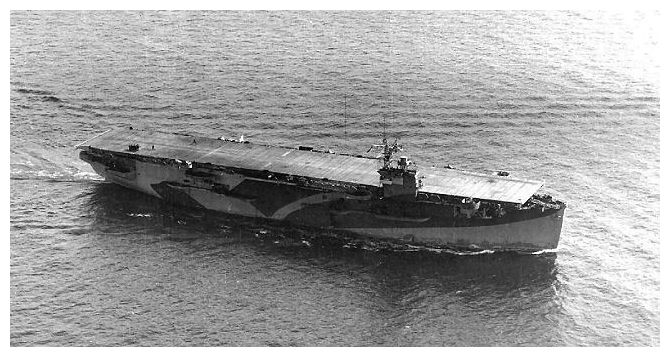
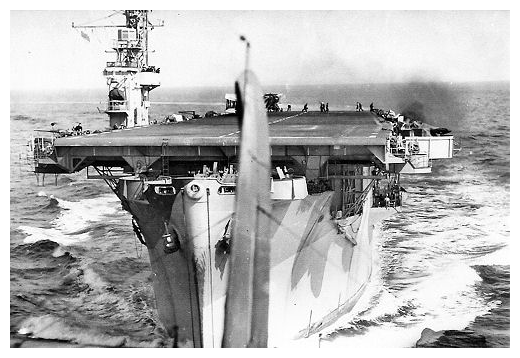
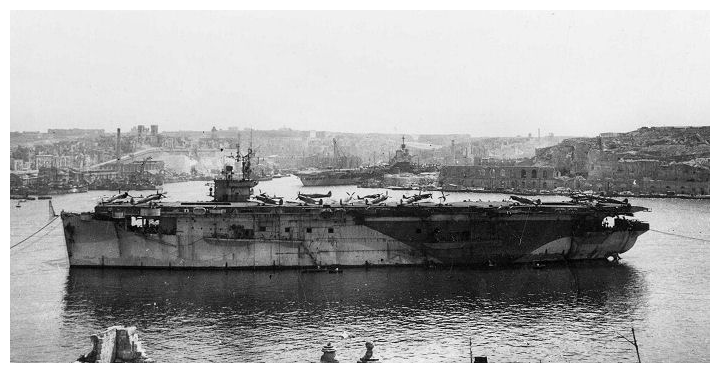
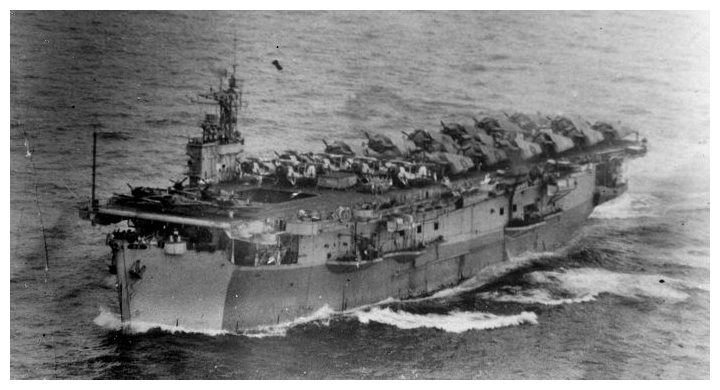
Comments (6)
My Father served on HMS Battler, I have some lovely photographs of the Ships dog, Lassie, and some great images of sailors boxing in grudge matches on the deck.